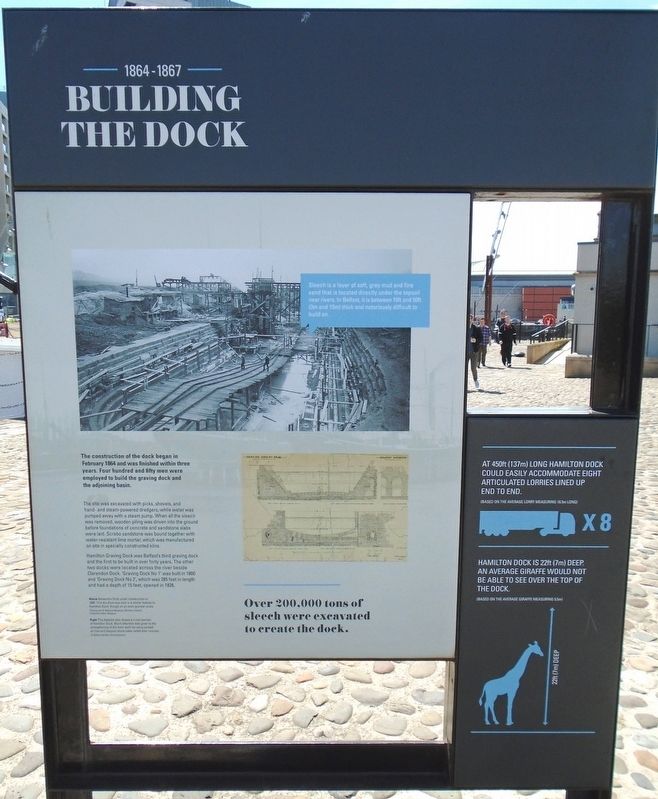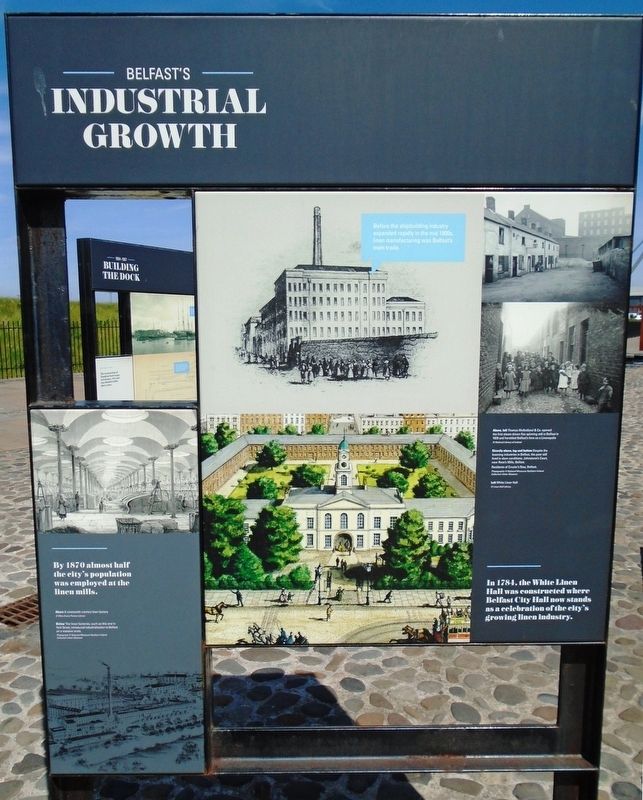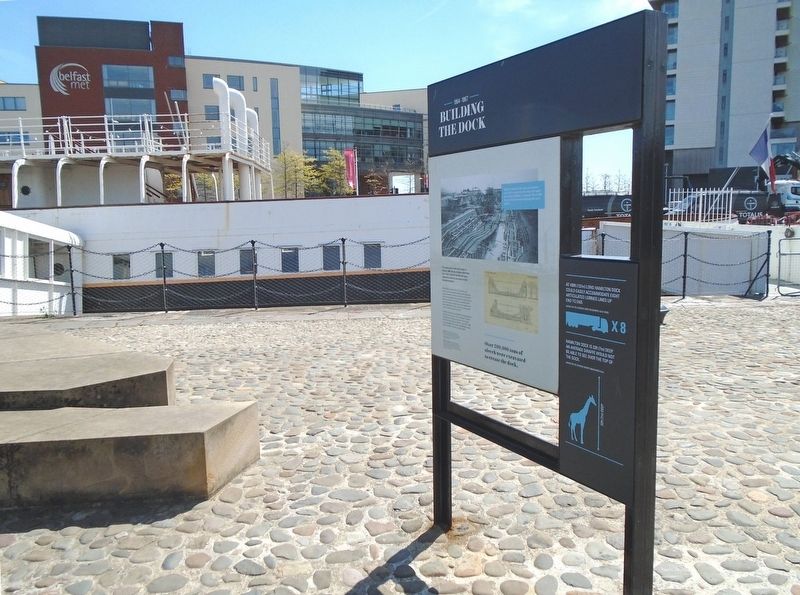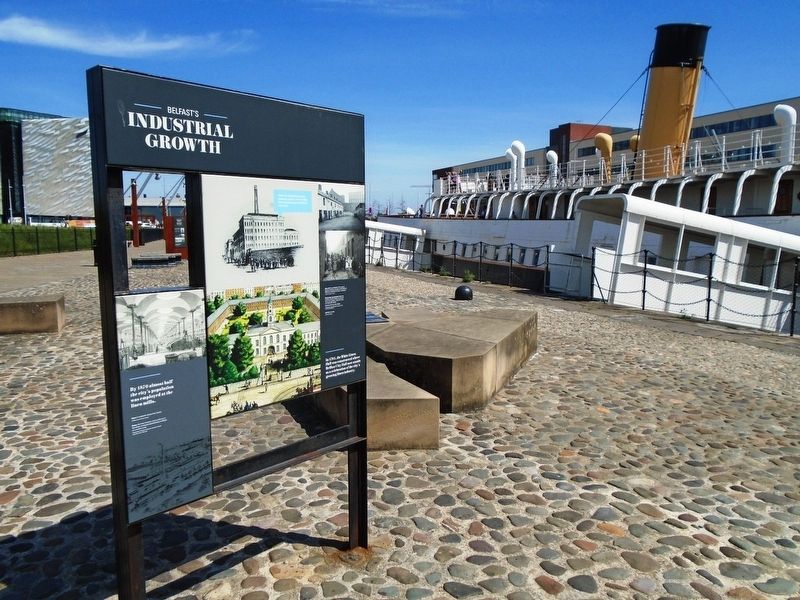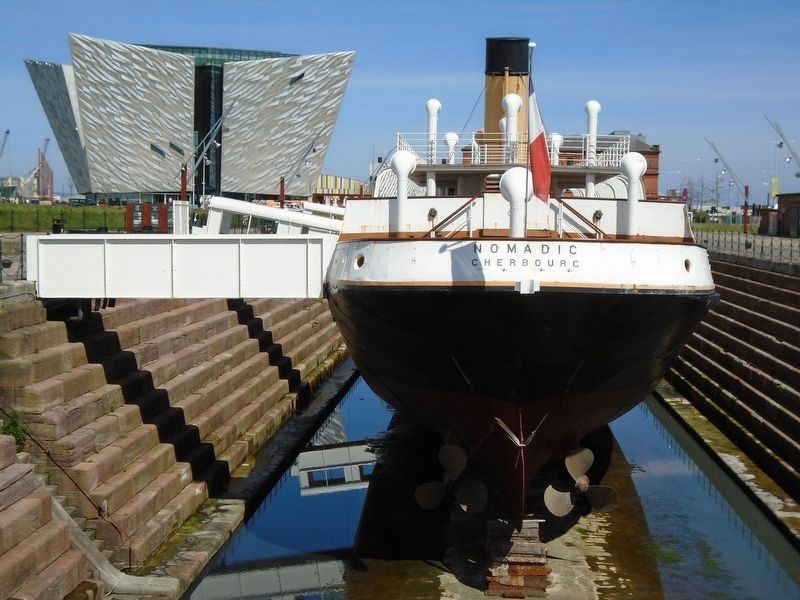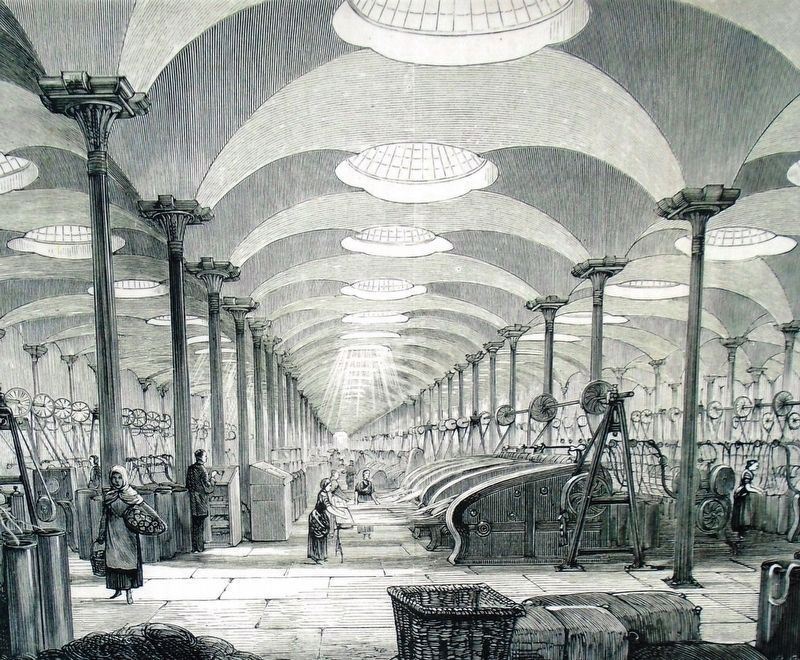Belfast, Northern Ireland, United Kingdom — Northwestern Europe (the British Isles)
Building the Dock 1864-1867 / Belfast's Industrial Growth
The construction of the dock began in February 1864 and was finished within three years. Four hundred and fifty men were employed to build the graving dock and the adjoining basin.
The site was excavated with picks, shovels, and hand- and steam-powered dredgers; while water was pumped away with a steam pump. When all the sleech was removed, wooden piling was driven into the ground before foundations of concrete and sandstone slabs were laid. Scrabo sandstone was bound together with water-resistant lime mortar, which was manufactured on site in specially constructed kilns.
Hamilton Graving Dock was Belfast's third graving dock and the first to be built in over forty years. The other two docks were located across the river beside Clarendon Dock. 'Graving Dock No 1' was built in 1800 and 'Graving Dock No 2', which was 285 feet in length and had a depth of 15 feet, opened in 1826.
Over 200,000 tons of sleech were excavated to create the dock.
[Blue inset caption reads]
Sleech is a layer of soft, grey mud and fine sand that is located directly under the topsoil near rivers. In Belfast, it is between 10ft and 50ft (3m and 15m) thick and notoriously difficult to build on.
At 450ft (137m) long Hamilton Dock could easily accommodate eight articulated lorries lined up end to end.
(Based on the average lorry measuring 16.5m long)
Hamilton Dock is 22ft (7m) deep. An average giraffe would not be able to see over the top of the dock.
(Based on the average giraffe measuring 5.5m)
[Photo captions read]
Above Alexandra Dock under construction in 1886. This dry dock was built in a similar fashion to Hamilton Dock, though on an even grander scale.
Right This detailed plan shows a cross-section of Hamilton Dock. Much attention was given to the strengthening of the dock walls by using vaulted arches and stepped stone sides called altar courses.
[Back]
By 1870 almost half the city's population was employed at the linen mills.
In 1784, the White Linen Hall was constructed where Belfast City Hall now stands as a celebration of the city's growing linen industry.
[Photo captions read]
AboveA nineteenth-century linen factory
Below The linen factories, such as this one in York Street, introduced industrialisation to Belfast on a massive scale.
Above, left Thomas Mulholland & Co. opened the first steam driven flax spinning mill in Belfast in 1829 and heralded Belfast's time as a Linenopolis[.]
Directly above, top and bottom Despite the booming industries in Belfast, the poor still lived in slum conditions. Johnstone's Court, near Ross's Mills, Belfast.
Residents of Crozier's Row, Belfast.
Left White Linen Hall
Topics. This historical marker is listed in these topic lists: Industry & Commerce • Waterways & Vessels. A significant historical month for this entry is February 1864.
Location. 54° 36.381′ N, 5° 54.697′ W. Marker is in Belfast, Northern Ireland. Marker is on Queens Road, on the left when traveling north. Part of the Titanic Belfast complex. Touch for map. Marker is at or near this postal address: Hamilton Dock, Belfast, Northern Ireland BT3 9DT, United Kingdom. Touch for directions.
Other nearby markers. At least 8 other markers are within walking distance of this marker. Queen's Island Shipyard / Belfast's Industrial Growth (here, next to this marker); Building the Dock 1864-1867 / Hamilton Dock (here, next to this marker); Hamilton Dock Stone Construction (here, next to this marker); Queen's Island Shipyard / Hamilton Dock (here, next to this marker); a different marker also named Hamilton Dock Stone Construction (a few steps from this marker); Nomadic in Hamilton Dock (a few steps from this marker); Operating the [Hamilton] Dock (a few steps from this marker); Features of the Dock (a few steps from this marker). Touch for a list and map of all markers in Belfast.
Also see . . .
1. The Hamilton Graving Dock. (Submitted on June 14, 2019, by William Fischer, Jr. of Scranton, Pennsylvania.)
2. Ulster Linen - Story of Belfast. (Submitted on June 14, 2019, by William Fischer, Jr. of Scranton, Pennsylvania.)
3. Linenopolis: the rise of the textile industry. (Submitted on June 14, 2019, by William Fischer, Jr. of Scranton, Pennsylvania.)
4. Thread of time: Belfasts iconic linen mills reborn – or left to decay (BelfastLive, 20. (Submitted on June 14, 2019, by William Fischer, Jr. of Scranton, Pennsylvania.)
Credits. This page was last revised on September 7, 2022. It was originally submitted on June 14, 2019, by William Fischer, Jr. of Scranton, Pennsylvania. This page has been viewed 160 times since then and 14 times this year. Photos: 1, 2, 3, 4, 5, 6. submitted on June 14, 2019, by William Fischer, Jr. of Scranton, Pennsylvania.
